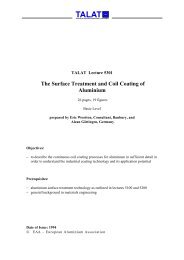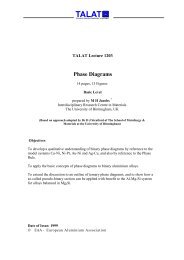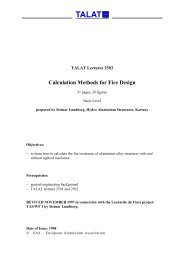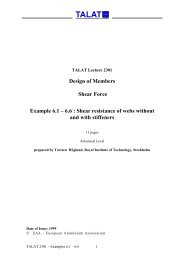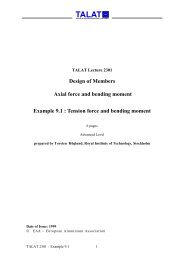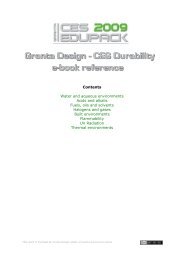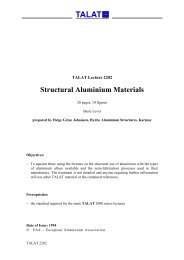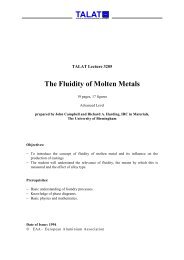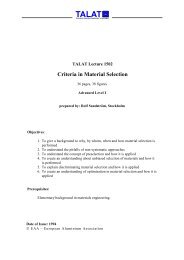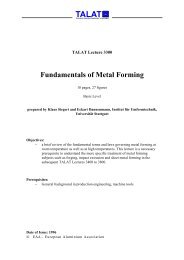TALAT Lecture 3502 - CORE-Materials
TALAT Lecture 3502 - CORE-Materials
TALAT Lecture 3502 - CORE-Materials
Create successful ePaper yourself
Turn your PDF publications into a flip-book with our unique Google optimized e-Paper software.
compressive forces“. The impact extrusion processes can be further sub-divided as<br />
follows:<br />
− according to the type of tool in:<br />
impact extrusion with rigid (immovable) tools and impact extrusion with an<br />
active medium, which plays a role only for special products;<br />
− according to the direction of material flow relative to the working direction<br />
of the machine in:<br />
forwards, reverse and lateral impact extrusion;<br />
− according to the work-piece geometry in:<br />
full, hollow and cup impact extrusion as well as flange impact extrusion<br />
(only for lateral impact extrusion);<br />
These basic process variations of impact extrusion are used in combinations among<br />
themselves as well as with other bulk forming operations like compressing, upsetting,<br />
form pressing, stamping, tapering and drawing. All impact extrusion operations can be<br />
conducted at room temperature (cold impact extrusion) as well as by heating to a higher<br />
operating temperature, depending on material and process specifications (semi-hot and<br />
hot impact extrusion).<br />
<strong>3502</strong>.02 Fundamentals<br />
Impact extrusion is based on the ability of crystals to glide by slip under certain stresses<br />
without destroying the cohesion between the slip planes. In order to be able to cause the<br />
crystal structure to form under impact extrusion, the resulting shear stresses or principal<br />
stress difference must exceed a certain critical value. This value is generally called the<br />
flow stress, k f .<br />
The change in dimensions of a body during forming is called strain which is referred<br />
either to the original dimensions, l o , b o , h o or to the instant dimensions, li, bi or hi.<br />
For impact extrusion the<br />
are usually used.<br />
conventional or engineering strain : ε A = ∆A / A o<br />
(reduction in area) where ∆A = (Ai - A o )<br />
and the natural or true strain: ϕ A = ln(Ai/A o )<br />
(logarithmic strain) = ln(1 + ε A )<br />
<strong>TALAT</strong> <strong>3502</strong> 5



